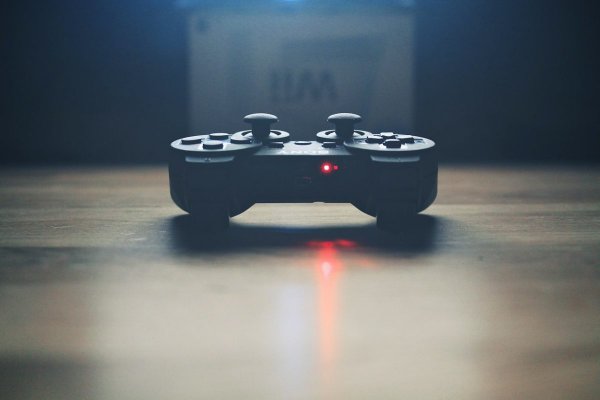
First, let’s get your nostalgia feels going…
Twenty-five years ago, Doom was released by id software as a follow up to Wolfenstein 3D. The classic shoot ’em up became one of the most iconic game of the 90s and set the stage for today’s highly popular FPS genre.
From the memorable music, to the bang of a buckshot from your shotgun, to IDBEHOLDS, Doom jumped away from the more “realistic” premise of Wolfenstein 3D (okay so robot-Hitler was a little crazy) and incorporated sci-fi and horror elements to make for a much more appealing experience.
This writer was seven years old when he first played id software’s masterpiece. While it garnered plenty of controversy due to its graphic violence and satanic themes over in the West (most famously in the Columbine High School Massacre), in a more innocent Sri Lanka, most of us probably just remember the first time we heard the sound of the “Pink Monster” in the corridors, waiting for an ultimate jump scare moment, and most probably dying due to our unpreparedness for this behemoth of a baddie.

Doom Guy, as he’s known, has no proper name or backstory, but is still an iconic character in the gaming community. Image courtesy carbincostume.com
IDBEHOLDS
Doom’s secret to success was avoiding pushing a heavy story, and instead just letting you be whoever you wanted to be. The idea of a ‘Man With No Name’ character did surprisingly well in a market used to cartoonish characters like Mario, Link, and Sonic. It resulted in removing potentially strong cultural identities/relationships with places like the US, by creating a more universal experience.
Sure, it was a square-jawed caucasian man in your HUD, but you didn’t have to think of any moral choices, or listen to cutscenes and dialogue. And, as a seven-year-old, not having to think about whether the demon you just shotgun blasted had a wife and little demon kids, was nihilistically comforting.

We created our own unique names for Doom’s baddies. Image courtesy doomworld.com
The fun part about games like Doom is you have the freedom to come up with your own names for the baddies due to its non-existent lore. In Sri Lanka, that meant we could create our own unique names for these various enemies we would face. We all had our unique names, here are a few you may have heard of:
Imp – Dog, Balla, Spikey Fireball Guy
Demon – Pink Monster
Cacodemon – Red Brain, Cyclops
Hell Knight – Goat Guy, Side Boss
The Spider Mastermind – Final Boss, Robo Spider
Lost Soul – Skull, Oluwa
Undead – Bald Guy, Green Haired Guy
(Had your own names for Doom’s baddies? Let us know in the comments.)
IDSPISPOPD
When you were done with the campaigns, Doom increased its shelf life by introducing a custom map editor, and was one of the first few instances of a modding community. While console gaming has led to less map-making aficionados, back then, kids (and adults) would spend hours/days/weeks building custom Doom levels. You could pretty much play a whole new campaign of Doom with masterfully designed levels available. Sure, our friends would create some awful levels, but we would still play it just so we can tell them their level was glitchy when we inevitably kept dying in it (never blame your lack of skills).
Unfortunately (or fortunately, if you’re an employer), Sri Lanka’s relatively lower ownership of PCs and our lack of internet access meant that we were devoid of the LAN craze that hit places like the US (and legitimately caused productivity issues to companies, much to the same extent that social media does today).

Doom’s map editor created new experiences for its players. Image courtesy doom.wikia.com
Playing Doom right now may make you chuckle at to how “bad” the game is, and we’ve heard kids tell us older gamers we are far too nostalgic, but that’s only because Doom laid the foundation for creating the visually stunning Doom like games of today. By pushing through a simple idea together, id software made a game that could drawn in a global audience.
IDBEHOLDI
Despite Doom following up with many iterations and a rather unfortunate movie starring The Rock, it’s still the original that holds up the strongest in the gaming community.
Last year we saw the release of the latest Doom, (yep that’s right, the 2016 version of Doom was rather uncreatively named Doom), still developed by id Software and published by Bethesda (famous for titles such as Fallout and Elder Scrolls).
Between the 2016 version and the original, there have been nine titles in total (not including Ultimate Doom), with three spin-offs, but most of these titles never quite received the acclaim or fanfare that the original game did, despite mostly positive reception on these titles. Perhaps it was because by the time games like Doom 3 came out in 2004, the market was full of FPS titles—most notably the highly popular titles such as Call of Duty, Battlefield, and Medal of Honour.
Doom’s 2016 release didn’t bring anything new to the table in terms of gameplay or plot, but it still sold considerably well in places like the UK and has its own map editor to boot.
IDDQD

The many expressions of Doom Guy has become classic game iconography. Image courtesy imgur.com
It took about a decade for people to stop calling first person shooters “Doom-like” games and refer to them as FPS (or in some circles COD like games). Despite being released before Doom, another popular title of the ’90s, Duke Nukem, didn’t quite gain popularity among the masses until 1996, when Duke Nukem 3D was launched.
Unlike Doom, Duke Nukem 3D was quite crass, and while still culturally significant, you can see why Doom still has more appeal over Duke Nukem, whose last effort was panned not just for its gameplay, but for also being lost in the ’90s with its crude references.
The power and impact of Doom made it the definition of a genre, something that even iconic games like Mario and Zelda have never achieved. Forty to fifty years from now, our older selves are no doubt likely to be telling our grandkids stories of how games were back in the day, and Doom is sure to be amongst those titles.
You can also learn about everything Doom by heading checking out their wiki.
Want more feels?





.jpg?w=600)


